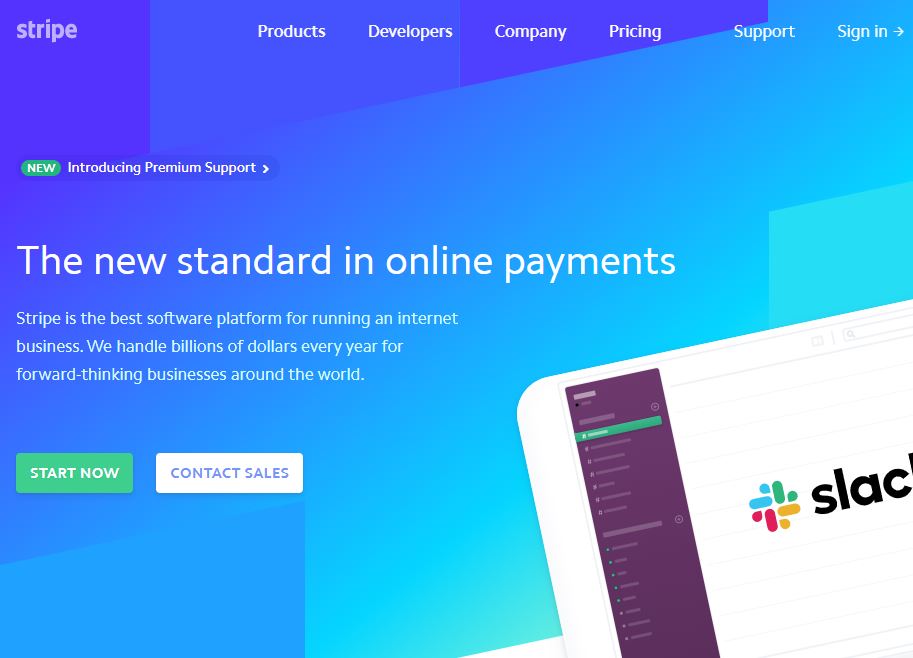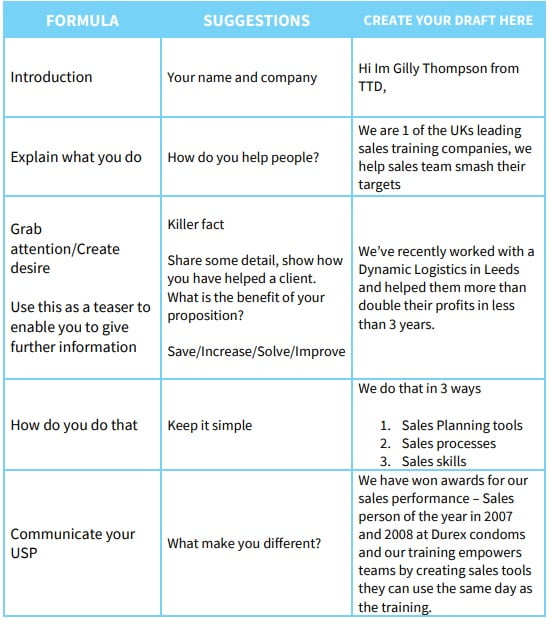What makes you different?
What makes you better than other brands?
These are some of the main questions flying through a customer’s head at the speed of light when engaging with you.
Your business needs to be equipped with a unique value proposition, or UVP for short, to deflect this.
Otherwise, you’ll blend into the rest of the businesses in the market.
Luckily your pal Carmine is here to save the day. 🙂
I’m going to be teaching you how to write a UVP that gets customers throwing their money at you.

What is a unique value proposition?
First of all, what is a UVP?
A unique value proposition is a statement that describes why your business or product is better than anything else on the market.
It’s the reason why a customer will buy from you when they’re on the fence.
It’s what keeps your competitors up at night.
It’s a unique identifier.
People think of your business when they think of a certain problem, solution, or concept.
However, it’s not what you think it is. It’s not a slogan (But you should read my slogan writing guide.) It’s not a tagline. It’s not something you write down and give to people.
UVP’s go deeper than that.
They are how you treat customers, the problem you solve, the emotions and experiences you create, and how you’re remembered.
Think of it as your company’s legacy. How do you want to be thought of?
Keep in mind that 5-7 brand interactions are required for a consumer to remember your brand. Hence why being memorable is more important than ever.
Whether you’re planning the next startup that’s going to change the world or dusting off an existing brand’s UVP, let’s talk about how to write one next.
How to write a unique value proposition
These are some of the strategies and questions to consider when writing a UVP.
Doing so will help you craft a value proposition that’s one-of-a-kind.
Check them out. 👇
1. Who’s your audience and what do they care about?
A unique value proposition needs to excite a very small hyper-segment of customers.
Not everybody. Not the world. Rather, a small group of people.
This is what Kevin Kelly (One of the world’s best marketers) calls your 1,000 true fans.
Watch the video below to see what I mean.
How much revenue would you be generating if you had a consistent 1,000 customers coming back every month?
This could be five to six figures MRR for many SaaS companies.
It’s also why narrowing down who you’re writing the UVP for is the first step.
This is especially important because 91% of consumers want to buy from authentic brands.
You can do this in many different ways, including:
- Studying trade publications and market reports.
- Analyzing public data from governments and other institutions.
- Breaking down how competitors market themselves and who their customers are.
- Engaging with fans on social media.
- Conducting focus groups.
- Sending our surveys and questionnaires.
- Using tools like Google Analytics.
These resources need to be placed under a microscope to answer questions like:
- What problems are my customers experiencing?
- What solutions do my customers need?
- What experiences have my customers had with other brands? (Good and bad.)
- What are my competitors doing and how can I do it better?
- Who are my customers? (Think demographics and psychographics)
This information will help you write a value proposition that resonates with the right group of people.
Keep in mind that a UVP doesn’t have to be lengthy. It can be a sentence or an entire page worth of material.
It’s simply a document to reference every time you’re marketing, advertising, and branding to continually push what makes you better.
2. What problem do you solve?
Why do customers buy products?
To solve problems.
However, many products solve the exact same problem.
They essentially do all of the same things.
It doesn’t matter if you walk into BMO, RBC, or TD, your experience won’t be drastically different. (These are Canadian banks for my international readers!)
They all offer high-interest savings, business accounts, you name it.
However, let me tell you something.
I was banking with an institution that felt like they were in the stone age.
Their locations were outdated. You couldn’t deposit cheques with a mobile app. You had to go into branches to solve everything.
You get my point.
Yet, other local banks had all of these features and more!
That’s a unique value proposition.
They solved small problems and inconveniences that other banks were yet to do.
This is why I suggest you brainstorm all of the problems you solve for customers along with what competitors don’t.
Following my first tip about market research will greatly help with this.
Remember, it can be small and under-the-radar things: convenient features, customer service, etc.
Another great example is Starbucks. Every time I walk into the one I regularly go to, they know my name, ask about my day and are very interactive with everybody.
Don’t worry, I don’t order a Vente-macchiato-cappuccino supreme with eight espresso shots.
I just get a tall black coffee. 😂
3. What makes you special?
You know your customers.
You know your competitors.
Cool.
So, what makes you different?
What features about your product, customer experience, or other things in between stand out like a sore thumb?
I really want to remind you that UVP’s can be found everywhere, too: websites, products, content, communication, etc.
Write down all of the little and big ways that you’re special. These may include:
- Better pricing than other businesses.
- A tailored customer service experience.
- Proprietary technology or features.
- Content quality. (Videos, blog posts, podcasts, etc.)
- Branding elements.
- Community engagement and events.
- Who you target.
- Clients and portfolio pieces.
- Materials and craftsmanship.
- Tone of voice and personality.
- Production or manufacturing process.
- Etc.
4. Make it clear and concise
Think of a value proposition like a mission or vision statement.
You may publish it on your website, a brochure, or other areas, but for the most part, it’s internal.
You reference it every time you operate to keep the proposition seeping into every department.
Write the UVP in a clear and concise matter. Everyone in the company should easily understand what it means and how to apply it.
They shouldn’t be scratching their heads wondering if you’re talking about the right business.
45% of marketers don’t believe their internal and external branding is aligned for this reason.
Once again, it can be a single sentence or mountains of paragraphs. It’s up to you.
Look how the payment processing company Stripe displays a UVP on their home page:

“Stripe is the best software platform for running an internet business” sums up what they do perfectly.
Running an internet business? Need to accept payments? We’re the best at it.
Have fun and experiment with copywriting value propositions.
Ideal places to include them are:
- Home pages
- About pages
- Landing pages
- Sales letters
- PPC ads
- Case studies
- Email newsletters
- Product pages
5. Practice your elevator pitch to get it right
Practice makes perfect.
An exceptional UVP won’t poof out of thin air. (As cool as that would be.)
Rather, you may have to write several versions and practice copywriting exercises to refine it.
It’s also why practicing your elevator pitch is an excellent method for finding UVP ideas.
An elevator pitch is a quick summary of what your business does and why others should buy from it.
Writing and speaking an elevator pitch will help you narrow down the unique elements of what you offer.
Here’s a template you can try for yourself:

It begins by introducing yourself and your company.
Next, explain what you do and how it helps people as I covered in some of my earlier points.
Then, elaborate on the benefit that your proposition delivers. Feel free to include exciting features, numbers, etc.
Explain how all of that was achieved and that sums up how all of what you shared makes you unique. There’s your proposition!
This is also excellent if you plan to attend conferences as you can communicate this to people you meet.
Unique value proposition examples
Nothing beats learning from others.
So, let’s take a peek at some UVP’s from some of the world’s most successful brands and how you can replicate them.
Wal-Mart’s cost savings
When you think of Wal-Mart, what comes to mind?
Affordable products and deals, right?

You can see this directly on the homepage of their website under the “More ways to save” section.
They list the many ways you save by purchasing from Wal-Mart, including rollback, clearance, deals of the week, and their weekly flyer.
A.K.A their UVP is saving money and affordability.
Work with the best of the best at McKinsey
McKinsey is the top consultancy in the world.
Thousands of people aspire to work at their firm to lock in a lucrative life-long career.
McKinsey knows this. They communicate it as a UVP in this section of their website:

“Come to McKinsey to do the best work, with the best teams and truly be at your best.” clearly states they are the best of the best.
Joining them you will be apart of the best performing company and team members while unlocking your full potential.
The world’s first marketing security software
New technology is one of the greatest unique propositions you could have.
Literally no one has it but you.
That’s why I love how the AI company Morphio communicates this through their homepage headline.

Users instantly know that they provide the world’s first software of its kind.
You can’t compare it to anything or look into alternatives because there’s nothing like it!
Final thoughts on copywriting unique value propositions
A unique value proposition prevents your brand from looking like a clone of everyone else.
It displays what makes you special, different, and why customers should choose you over competitors.
Nonetheless, many businesses operate without one, making them blend into the market like a drop in the ocean.
Follow the strategies and examples you saw today to begin crafting a killer UVP to avoid this common predicament.
What stands out the most about your company?














